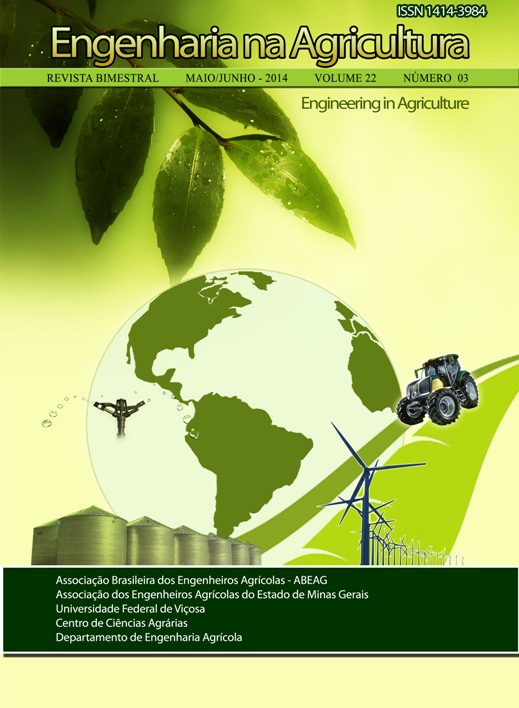LÂMINAS DE IRRIGAÇÃO E DOSES DE NITROGÊNIO EM COBERTURA NO FEIJOEIRO - DOI: 10.13083/1414-3984.v22n04a07
DOI:
https://doi.org/10.13083/reveng.v22i4.492Palavras-chave:
Phaseolus vulgaris, preparo convencional, tanque Classe A, ureia.Resumo
A irrigação do feijoeiro na época de inverno vem propiciando produtividade acima da média anual devido, principalmente, ao aumento da eficiência dos fertilizantes nitrogenados. O objetivo do trabalho foi avaliar a resposta do feijoeiro a diferentes lâminas líquidas de irrigação e à adubação nitrogenada em cobertura. O experimento foi conduzido na Unidade Universitária de Aquidauana - Universidade Estadual do Mato Grosso Sul, utilizando-se a cultivar de feijão Pérola semeado em julho de 2005, sendo a área experimental preparada por manejo convencional sobre cobertura de capim colonião. O delineamento experimental utilizado foi o de blocos casualizados, com parcelas subdivididas composto por três blocos e duas replicações dentro de cada bloco. As parcelas foram compostas de três lâminas líquidas (16,5; 27,6 e 30,5 mm) correspondendo a 50, 30 e 27% de reserva de água no solo, respectivamente; e nas subparcelas quatro doses de nitrogênio (0, 50, 100 e 150 kg ha-1) aplicadas em cobertura no estádio V4. Foram avaliados o número de vagens por planta, número grãos por planta, número grãos por vagem, massa de 100 grãos, produção de grãos por planta e a produtividade de grãos e eficiência agronômica. Conclui-se que as lâminas líquidas de irrigação baseadas na reserva de água no solo não influenciam os componentes de produção e produtividade de grãos do feijoeiro. O número e a produção de grãos por planta e a massa de 100 grãos são influenciadas pelas doses de nitrogênio em cobertura no feijoeiro.Downloads
Downloads
Publicado
Como Citar
Edição
Seção
Licença
Autores que publicam nesta revista concordam com os seguintes termos:
O(s) autor(es) autoriza(m) a publicação do texto na da revista;
O(s) autor(es) garantem que a contribuição é original e inédita e que não está em processo de avaliação em outra(s) revista(s);
A revista não se responsabiliza pelas opiniões, ideias e conceitos emitidos nos textos, por serem de inteira responsabilidade de seu(s) autor(es);
É reservado aos editores o direito de proceder a ajustes textuais e de adequação às normas da publicação.
A partir da submissão, o autor estará cedendo integralmente seus direitos patrimoniais da obra à publicação, permanecendo detentor de seus direitos morais (autoria e identificação na obra) e de acordo com a Licença Creative Commons, CC BY-NC.








 Esta obra está licenciada com uma Licença
Esta obra está licenciada com uma Licença 